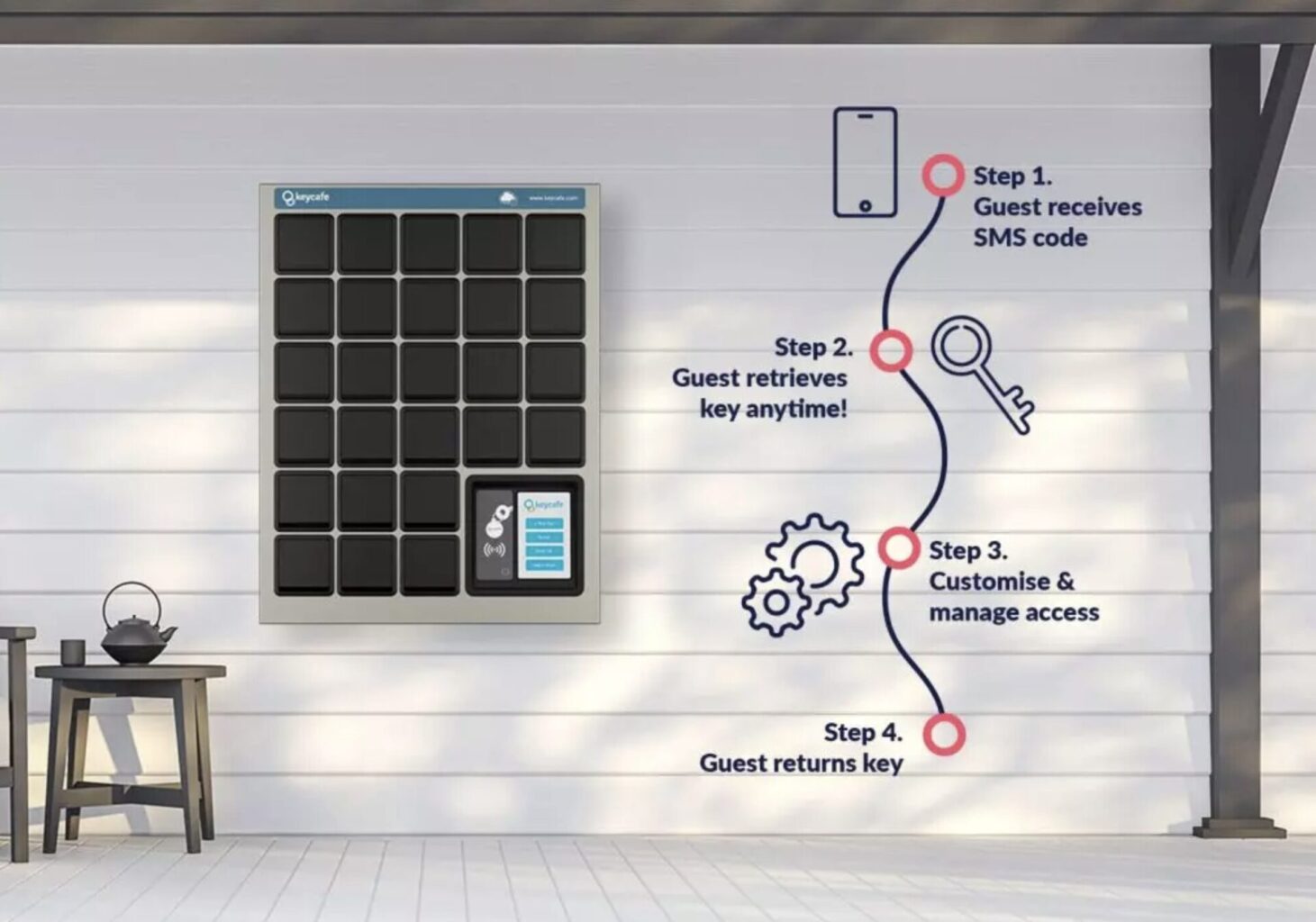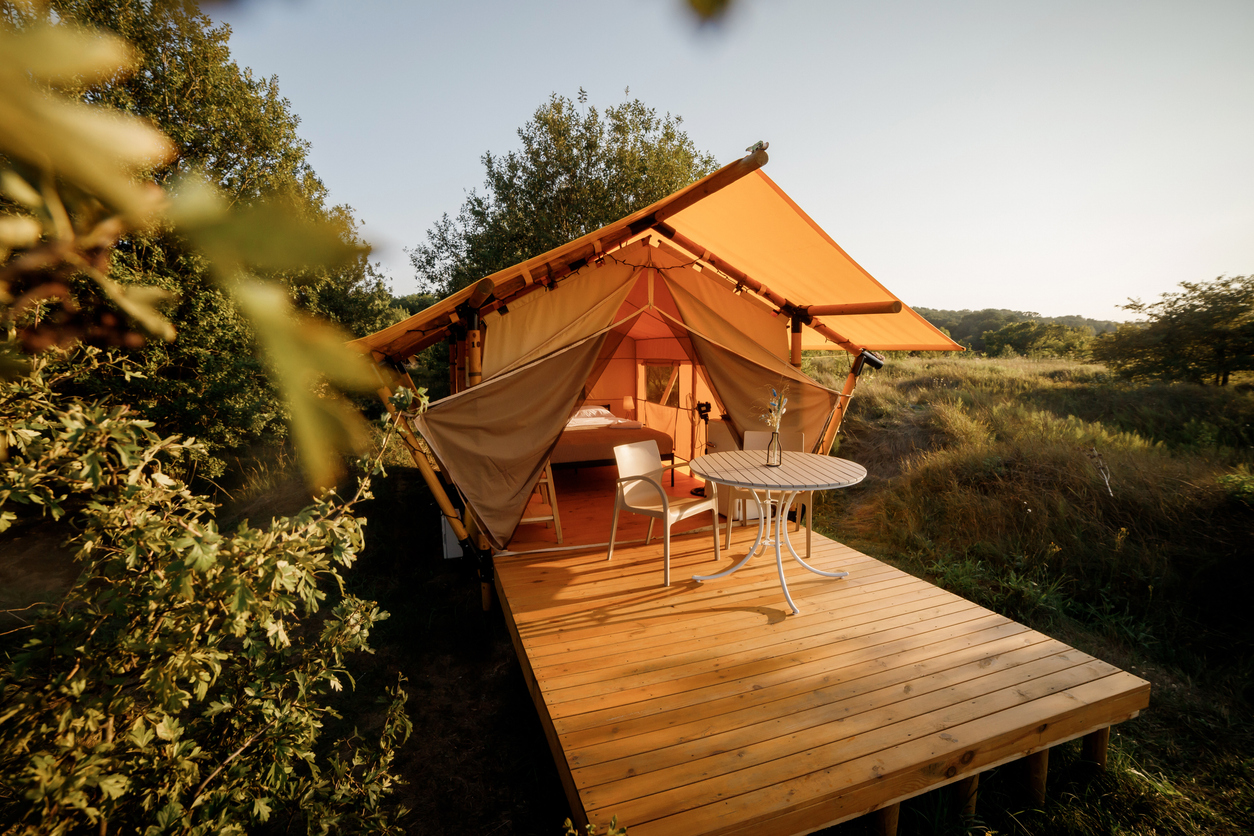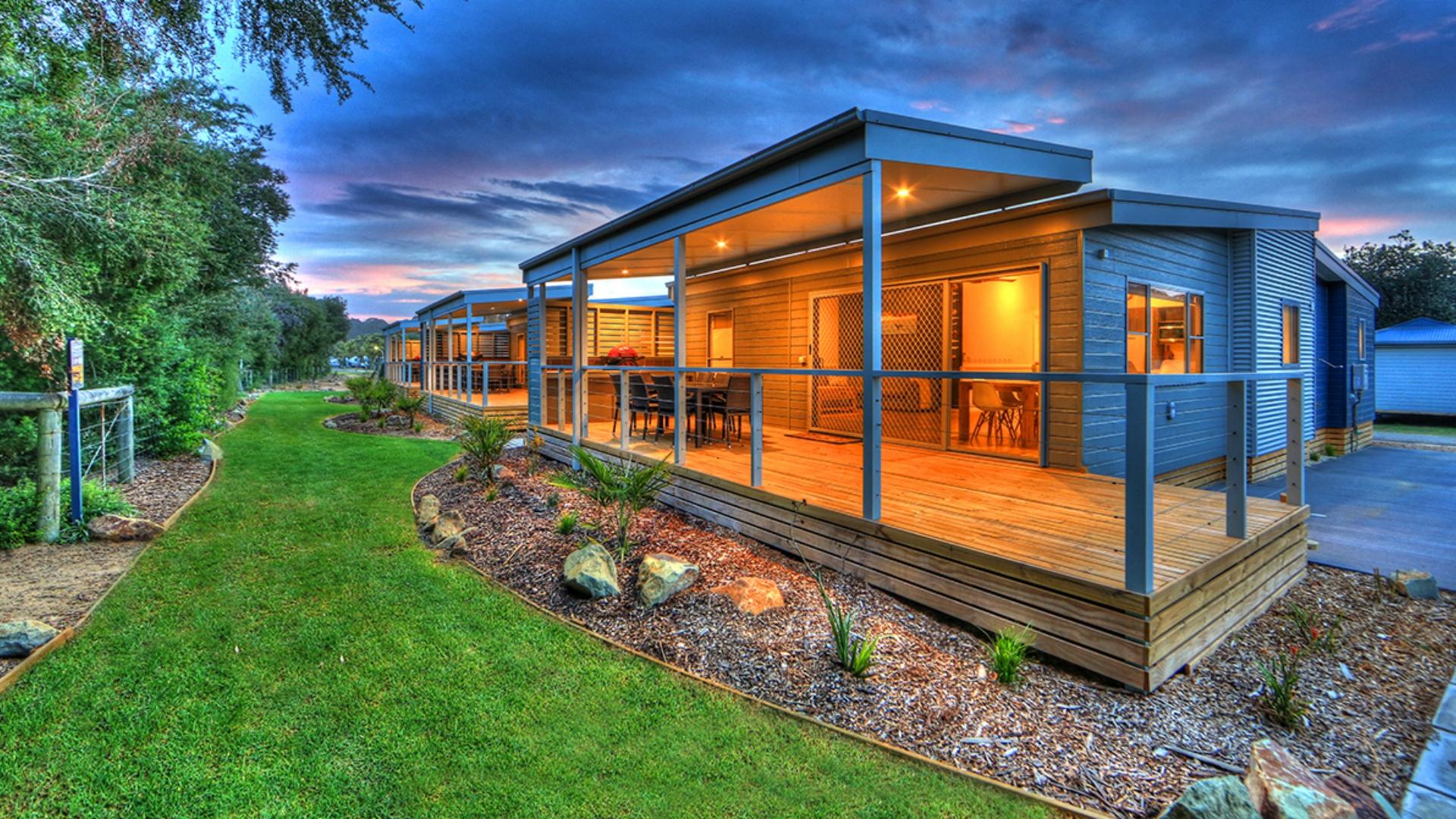Starting a glamping business is an exciting opportunity for accommodation owners looking to tap into a growing market that combines the allure of nature with the comforts of luxury. Glamping offers travelers a unique way to experience the great outdoors without sacrificing comfort. As more people seek out these experience-driven getaways, the demand for well-run glamping sites has never been higher. In this guide, we’ll explore essential tips to help you successfully launch and manage your glamping business, from planning and setup to efficient operations and guest satisfaction.
What Is a Glamping Business?
If you’re an accommodation business owner considering purchasing a campground with the idea of transforming it into a glamping site, you’re tapping into a rapidly growing and lucrative niche. But what exactly is a glamping business, and why is it an exciting opportunity?
Glamping, short for “glamorous camping,” is all about offering the thrill of the great outdoors with the comfort and luxury of high-end accommodations. Think of it as camping without the discomfort. Instead of pitching a tent and sleeping on the ground, glamping guests enjoy plush beds, cozy interiors, and often, top-tier amenities like private bathrooms, kitchens, and even Wi-Fi.
The Appeal of Glamping
For many travelers, glamping is the perfect middle ground. It allows people to connect with nature without sacrificing the comforts of home. It’s an attractive option for couples looking for a romantic getaway, families wanting a unique vacation, or even urban dwellers seeking a break from the hustle and bustle without giving up their creature comforts.
Why Should You Consider Starting a Glamping Business?
- High Demand, High Returns: The glamping market is on the rise, with more people seeking unique, experience-driven accommodations. A well-run glamping site can command higher rates than traditional camping, translating into better profitability. In North America alone, glamping rentals have increased 310% in the last 10 years.
- Flexible Offerings: Glamping accommodations can range from safari tents and yurts to treehouses and airstream trailers. This flexibility allows you to tailor your offerings to different target markets, whether it’s eco-conscious travelers, luxury seekers, or adventure enthusiasts.
- Lower Operating Costs: Compared to a traditional hotel, running a glamping site often involves lower overheads. There’s no need for extensive infrastructure or utilities, and maintenance can be simpler and more cost-effective.
- Sustainable Appeal: Many glamping sites emphasize eco-friendly practices, such as using solar power, composting toilets, and sustainable building materials. This not only reduces costs but also attracts the growing number of environmentally conscious travelers. A study conducted by Modern Campground indicates that 52% of campers are influenced by a campground’s sustainable practices before they make a decision on booking with them.
9 Tips on How to Start a Glamping Business

Whether you’re transforming an existing campground or starting from scratch, here are some essential tips to help you get your glamping business off the ground.
| Tip for Starting a Glamping Business | Details |
| 1. Creating a Glamping Business Plan | Develop a detailed business plan outlining target market, pricing, revenue projections, and operations. Include your unique selling proposition (USP) and scaling strategy. |
| 2. Upfront Glamping Business Startup Costs | Budget for land acquisition, tents, landscaping, utilities, furnishings, permits, licenses, and insurance. Proper budgeting helps avoid surprises and ensures financial preparedness. |
| 3. Navigating Permits, Landscaping, and Amenities | Check local regulations for permits and zoning. Design landscaping for privacy and enhance guest experience with amenities like private bathrooms and outdoor kitchens. Contact local agencies for compliance. |
| 4. Selecting the Best Tents for Your Glamping Business | Choose durable, weather-resistant tents like safari tents, yurts, or geodesic domes. Align your tent selection with your target market’s expectations and your site’s aesthetic. |
| 5. Choosing a Glamping Business Software | Use a comprehensive software like Newbook to manage bookings, guest communications, and operations. Features like channel management and automated communication enhance efficiency. |
| 6. Marketing Your Glamping Business | Build a strong online presence with a website and social media. Use high-quality photos, offer promotions, and leverage OTAs like Airbnb and Booking.com. Encourage guest reviews for word-of-mouth marketing. |
| 7. Consider the Guest Experience | Focus on details like high-quality linens, eco-friendly toiletries, and welcome baskets. Offer additional services like guided tours or gourmet meals to enhance guest satisfaction and encourage repeat visits. |
| 8. Plan for Seasonality | Address seasonal fluctuations by offering special packages during peak times and hosting events in the off-season. Consider winterizing tents to extend the operating season. |
| 9. Sustainability Matters | Implement sustainable practices like solar power and composting toilets. This appeals to eco-conscious guests, reduces costs, and protects the natural environment of your site. |
1. Creating a Glamping Business Plan
Before diving into the fun parts, like picking out tents and designing amenities, you need a solid business plan. This plan should outline your target market, pricing strategy, projected revenue, and operational details. A well-thought-out business plan not only helps you stay organized but is also essential if you need financing. Include details like your unique selling proposition (USP)—what sets your glamping site apart from the rest—and how you plan to scale the business over time.
2. Upfront Glamping Business Startup Costs to Expect
Starting a glamping business involves various startup costs, so it’s crucial to budget wisely. Some of the major expenses include land acquisition or leasing, purchasing glamping tents or structures, landscaping, utilities, and furnishing the interiors. Don’t forget to factor in the costs of permits, licenses, and insurance. Knowing these costs upfront will help you avoid surprises down the line and ensure that you’re financially prepared to launch your business.
3. Navigating Permits, Landscaping, and Amenities
Permits and regulations vary depending on your location, so it’s important to check with local authorities to ensure you’re compliant with zoning laws, environmental regulations, and building codes. Landscaping is another critical component of your glamping site; it should complement the natural beauty of the area while also providing privacy and a sense of seclusion for guests. As for amenities, think about what will make your site stand out—consider adding private bathrooms, outdoor kitchens, or even hot tubs.
Total costs for permits and licensing will vary widely depending on the area in which you want to start your campground. In Canada, a website called BizPal is a good place to start with determining permit and licensing costs. In the United States, The federal recreation government website and National Park Service website are good starting points. You’ll also need to contact the state agency that oversees campgrounds in your state. Individual state agencies will have their own rules and regulations regarding permits and licensing for campgrounds that you will need to adhere to.
4. Selecting the Best Tents for Your Glamping Business
The type of glamping tents you choose will have a significant impact on the guest experience. Popular options include safari tents, yurts, bell tents, and even geodesic domes. When selecting tents, consider factors such as durability, weather resistance, ease of setup, and the level of luxury they offer. Your choice should align with your target market’s expectations and the overall aesthetic of your glamping site.
5. Choosing a Glamping Business Software
Managing bookings, guest communications, and daily operations can be overwhelming without the right tools. Investing in a comprehensive glamping business software like Newbook can streamline your operations and enhance the guest experience. Newbook offers features like reservation management, channel management, dynamic pricing, and automated communication, all of which help you manage your business more efficiently. With Newbook, you can keep track of bookings, manage your inventory, and even market your glamping site—all from one platform.
So you manage a campground? We make it easy
Newbook is your all in one campground management software. Talk to us today to learn how you can improve operations and increase bookings for your campground.


6. Marketing Your Glamping Business
Once your glamping site is ready, it’s time to attract guests. Start marketing your glamping business by creating a strong online presence with a professional website and active social media accounts. High-quality photos and videos showcasing your unique accommodations are essential for drawing in potential guests. Consider offering promotions or discounts for early bookings to build initial interest. Don’t forget to leverage online travel agencies (OTAs) like Airbnb, Booking.com, and Glamping Hub to reach a broader audience. Additionally, encourage guests to leave reviews and share their experiences on social media to generate word-of-mouth marketing.
7. Consider the Guest Experience
The key to a successful glamping business is providing an unforgettable guest experience. Pay attention to the little details that make a big difference, such as high-quality linens, eco-friendly toiletries, and thoughtful touches like welcome baskets. Consider offering additional services like guided tours, outdoor activities, or gourmet meals to enhance the overall experience. Happy guests are more likely to leave positive reviews and return for future stays.
8. Plan for Seasonality
Glamping businesses are often subject to seasonal fluctuations, so it’s important to plan accordingly. During peak seasons, maximize occupancy by offering special packages or events. In the off-season, consider hosting retreats, workshops, or other activities that can attract visitors year-round. Additionally, winterizing your tents or offering heated accommodations can help extend your operating season.
9. Sustainability Matters
Today’s travelers are increasingly eco-conscious, so integrating sustainable practices into your glamping business can give you a competitive edge. Consider using solar power, composting toilets, and sustainable building materials. Not only does this appeal to environmentally aware guests, but it can also reduce operating costs and help protect the natural beauty that makes your glamping site special.
What Else to Consider Before You Start a Glamping Business
There are a few more critical factors to think about before diving into starting a glamping business. Beyond the basics of setting up accommodations and securing permits, you need to consider how your design choices, customer service, and financial expectations will impact the success of your business.
1. Designing a Glamping Environment with Your Demographic in Mind
One of the key aspects of a successful glamping business is designing an environment that resonates with your target demographic. Understanding who your ideal guests are—whether they’re families, couples, adventure seekers, or luxury travelers—will guide your decisions in everything from the style of your accommodations to the amenities you offer.
- Families might appreciate larger tents or cabins with multiple sleeping areas, play spaces for children, and family-friendly activities.
- Couples may prefer intimate, romantic setups with private hot tubs, cozy fireplaces, and secluded locations.
- Adventure Seekers might look for rugged, minimalistic accommodations that offer easy access to hiking, kayaking, or other outdoor activities.
- Luxury Travelers will expect high-end finishes, spa-like bathrooms, premium bedding, and possibly even personal concierge services.
Design your glamping environment to cater specifically to the needs and desires of your chosen demographic. This will not only attract your ideal guests but also ensure they have a memorable experience that leads to positive reviews and repeat bookings.
2. Customer Service and Support Staff
Exceptional customer service is a cornerstone of any successful hospitality business, and glamping is no exception. Even though glamping offers a more independent experience compared to traditional hotels, guests still expect a high level of service. This could include:
- Responsive Communication: Ensure that guest inquiries, both before and during their stay, are answered promptly. Consider setting up automated communication for common questions or issues, but also be ready to handle more complex requests personally.
- On-Site Support: Depending on the size and location of your glamping site, having on-site staff available to assist guests with check-ins, tours, or any issues that arise can be a huge advantage.
- Maintenance and Housekeeping: Regular maintenance of both the interior and exterior of your glamping accommodations is essential to keep them in top condition. Housekeeping services should also be available, especially for guests staying multiple nights.
Investing in a well-trained, friendly support staff will enhance the guest experience and set your business apart from others that may be more self-service oriented.
3. Is a Glamping Business Profitable?
The profitability of a glamping business depends on several factors, including location, initial investment, operational efficiency, and market demand. Here’s what you need to consider:
- Initial Investment vs. Revenue: Glamping accommodations typically have lower startup costs compared to traditional hotels, but they can command premium prices due to their uniqueness and appeal. However, your return on investment (ROI) will depend on your ability to attract and retain guests consistently.
- Occupancy Rates: The location of your glamping site plays a significant role in your occupancy rates. Sites near popular tourist destinations or natural attractions tend to perform better. Seasonal fluctuations can impact occupancy, so diversifying your offerings or hosting special events during off-peak times can help maintain steady bookings.
- Operational Costs: Operating a glamping business generally involves lower ongoing costs than a traditional hotel, but it’s still important to manage expenses like maintenance, utilities, staff, and marketing. The more efficiently you can run your operations, the more profitable your business will be.
- Market Trends: The demand for glamping has been on the rise, driven by the increasing desire for unique, experience-based travel. If this trend continues, a well-run glamping business in a desirable location has strong profit potential.
A glamping business can be highly profitable if you carefully plan your offerings, control costs, and market effectively to the right audience. With the growing popularity of glamping, there’s a significant opportunity to build a thriving business that offers both financial rewards and the satisfaction of providing unique, memorable experiences to guests.
After You Open: Running a Glamping Business Efficiently

Once your glamping business is up and running, the key to long-term success is efficient management. Leveraging property management software and features like automation can significantly streamline operations, enhance guest satisfaction, and reduce the workload on your team. Here’s how you can use tools like Newbook to run your glamping business efficiently:
| Efficiency Strategy for Running a Glamping Business | Details |
| Automate Routine Tasks | Use Newbook to automate booking confirmations, follow-up emails, and dynamic pricing adjustments, reducing manual work and enhancing guest satisfaction. |
| Implement Self Check-In | Offer keyless entry and automated check-in instructions via Newbook, providing convenience and flexibility for guests, especially for late arrivals. |
| Streamline Guest Communication | Automate pre-arrival emails, on-demand assistance, and post-stay review requests to keep guests informed and engaged with minimal effort. |
| Manage Operations from Anywhere | Leverage Newbook’s mobile-friendly platform to manage bookings, monitor real-time data, and coordinate staff remotely, ensuring smooth operations. |
| Optimize Resource Allocation | Automate maintenance scheduling, manage energy use, and track inventory through Newbook to ensure efficient use of resources and maintain guest satisfaction. |
1. Automate Routine Tasks
Automation is a game-changer for running a glamping business. By automating routine tasks, you free up time to focus on delivering a memorable guest experience. Newbook’s automation features allow you to:
- Automate Booking Confirmations: Automatically send personalized booking confirmations as soon as a reservation is made. This ensures guests receive timely information without manual input.
- Schedule Follow-Ups: Set up automated emails to be sent before and after the stay, providing guests with arrival instructions, check-in details, and a thank-you note post-departure. These touchpoints are critical for enhancing guest satisfaction and encouraging repeat bookings.
- Dynamic Pricing Adjustments: Use Newbook’s dynamic pricing tool to automatically adjust rates based on factors like occupancy, seasonality, and local events. This ensures your prices are always competitive without the need for constant monitoring.
2. Implement Self Check-In
Modern travelers, especially those seeking unique experiences like glamping, appreciate convenience. Offering self check-in options can elevate the guest experience by providing flexibility and reducing the need for staff involvement:
- Keyless Entry Systems: With Newbook, you can integrate a keyless entry system through our Key Café that allows guests to check in at their convenience. Send access codes or digital keys directly to their mobile devices, making the arrival process seamless.
- Automated Check-In Instructions: Upon booking, set up Newbook to automatically send guests detailed check-in instructions, including how to access their tent or cabin and any other necessary information. This reduces check-in wait times and enhances the guest experience.
- Late Arrivals: Self check-in is especially beneficial for guests arriving late at night. They can access their accommodations without the need for on-site staff, providing them with a hassle-free experience.

3. Streamline Guest Communication
Effective communication is vital for guest satisfaction, but it doesn’t have to be time-consuming. Newbook’s automated communication tools ensure that your guests always feel informed and cared for:
- Automated Pre-Arrival Emails: Send pre-arrival emails that include directions, packing tips, and what to expect during their stay. This helps guests prepare and sets the tone for their visit.
- On-Demand Assistance: While automation handles routine communication, Newbook also allows guests to easily contact you or your team through integrated messaging systems. This ensures that any immediate concerns are addressed promptly.
- Feedback and Reviews: After their stay, automatically prompt guests to leave a review. Positive reviews are crucial for attracting new customers, and feedback can help you continuously improve your services.
4. Manage Operations from Anywhere
Newbook’s cloud-based platform offers the flexibility to manage your glamping business from anywhere, at any time:
- Mobile Management: Whether you’re on-site or off, Newbook’s mobile-friendly interface allows you to monitor bookings, update availability, and communicate with guests directly from your smartphone or tablet.
- Real-Time Data Access: Keep track of your occupancy rates, revenue, and guest preferences in real-time. This enables you to make informed decisions quickly, whether you’re adjusting pricing or scheduling maintenance.
- Staff Coordination: Use Newbook to coordinate with your team efficiently. Assign tasks, track progress, and ensure that your site is running smoothly, all through a single platform.
5. Optimize Resource Allocation
Efficiently running a glamping business also involves optimizing your resources, from staff to utilities:
- Maintenance Scheduling: Automate maintenance tasks through Newbook to ensure that your tents, cabins, and common areas are always in top condition. Regular maintenance prevents issues before they affect guests.
- Energy Management: Integrate Newbook with smart energy systems to monitor and manage electricity usage across your site. This is especially important if you’re running an eco-friendly glamping site.
- Inventory Management: Keep track of supplies, from linens to toiletries, using Newbook’s inventory management features. This helps you avoid shortages and ensures that guests always have what they need.
Conclusion
Launching a glamping business requires careful planning, smart investments, and a focus on delivering exceptional guest experiences. By following these tips—crafting a solid business plan, budgeting for startup costs, navigating permits, choosing the right tents, leveraging technology like Newbook, and more—you’ll be well on your way to creating a successful and profitable glamping site. Remember, the key to long-term success lies in efficient management, continuous improvement, and adapting to the evolving needs of your guests. With the right approach, your glamping business can thrive in this exciting and lucrative market.
Reach out to Newbook today for a demo of our software, and discover how our all-in-one solution can help you jumpstart your glamping business.


